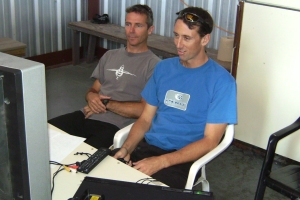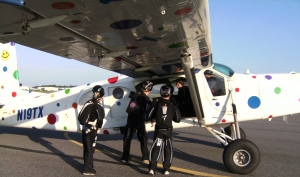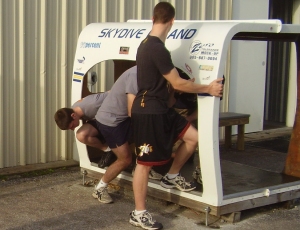
National
Skydiving
League
226 Pecan Street
Deland FL 32724
tel: (386) 801-0804
© 2003 - 2024
All Rights Reserved


226 Pecan Street
Deland FL 32724
tel: (386) 801-0804
© 2003 - 2024
All Rights Reserved


The 22-pointers in Round 2 were actually 23-pointers within working time for both teams. Event judges Shannon Pilcher and Pete Allum deducted one point for each team. Fastrax Blue and Sequence lost one point each, as well. The Dutch team Orange Blue had a 2-point deduction.
Shannon Pilcher and Pete Allum continued with the judging policy that Eric Heinsheimer and Jukka Olkkonen had set at the FSL Shamrock Showdown 2008. It was a tough policy, and the goal has been to prepare the national teams as good as possible for any judging situation at the World Championship of Formation Skydiving this year.


The four national teams in DeLand did not only have to deal with especially sharpened eyes of the judges. The right-hand door of the Pilatus Porter is still challenging teams and videographers on each exit.
The difficulty is not only the fact that the teams had to switch from left-hand doors to right-hand doors. The exit and subterminal air feels very different, as well.


The Pilatus Porter will drop the teams in Maubeuge with an airspeed of approx. 70 knots. The difference of 15 knots is significant and adds a challenging situation to the right-hand door exit.
Comments from the teams that have to switch to the Pilatus Porter always include the feeling of very soft air right after the exit. That is obviously no surprise considering the difference of 15 knots. However, it is still difficult to get used to the slower airspeed at the beginning of the skydive.


The tough climbout creates the impression that there will be a lot of air, but there isn't. It takes a lot of exit training to get used to all these factors. Eventually, even good climbouts and launches from the Pilatus Porter still do not bring the same great start compared to the 85 - 95 knot exits from the Twinotter.
The teams have two options how to deal with the slower airspeed. They can simply accept that the air is "softer" and patiently wait until the airspeed increases with gravity. This means that the first subterminal moves will be slower.


Last not least, the exit formations have a different angle and timeframe during the subterminal work, and the videographers are greatly challenged to keep everything in frame. The climbout and the position behind the sliding door are more difficult, as well.
It might be interesting to keep these factors in mind while watching the national teams doing their work during the first five seconds of each competition jump. Enjoy the new NSL-TV show and help the NSL with a donation.